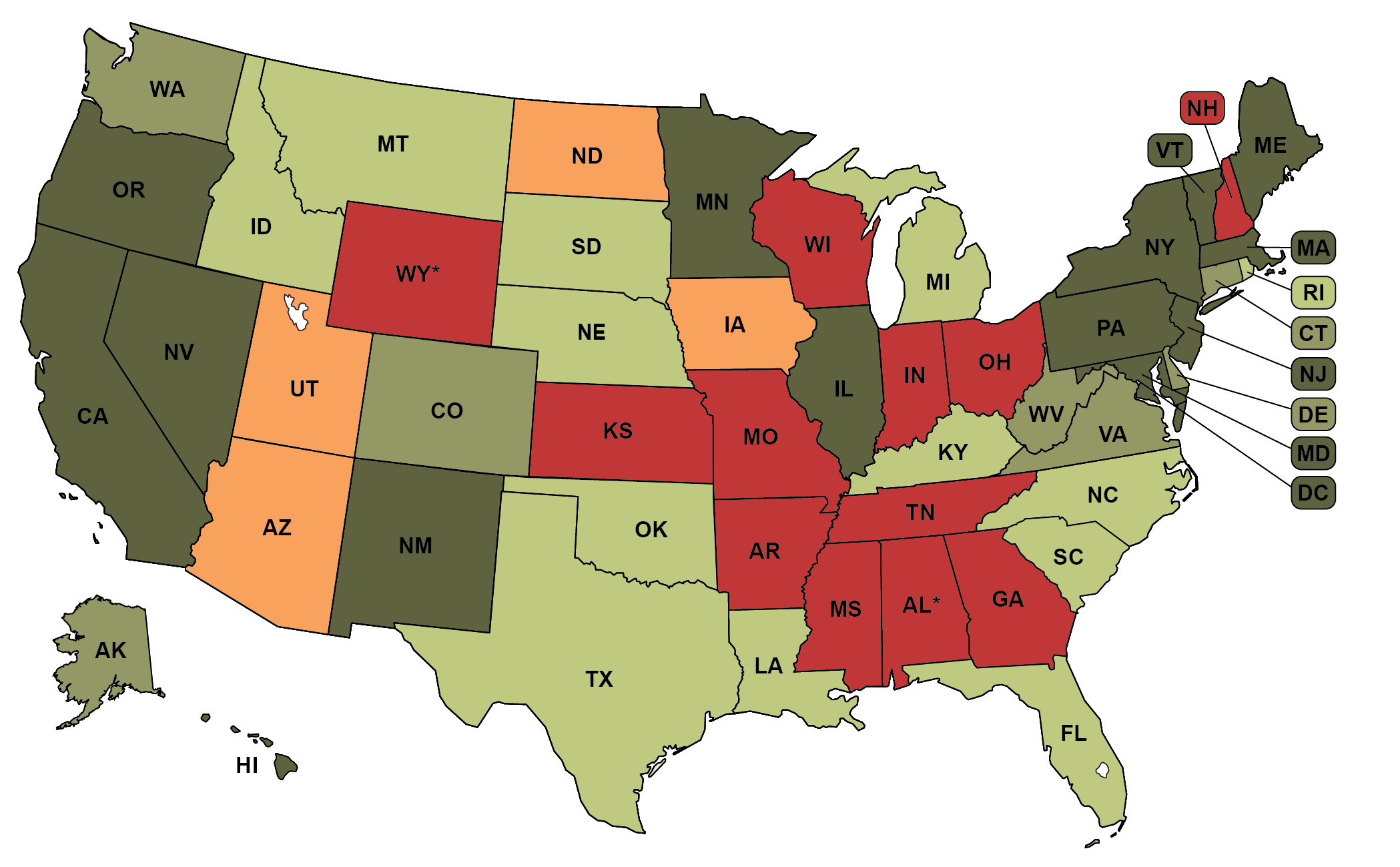The majority of states require some form of identification to be shown by voters voting in-person. States that do not require an identity document typically ask for a signature or other identifying information to confirm the voter’s eligibility. Our scoring gives negative points to states that have strict procedures in place for voters that do not have acceptable identification. These strict procedures usually require additional steps to be taken by the voter after Election Day to ensure their vote is counted. This information is not intended to constitute legal advice. These laws do not apply to mail/absentee voting, or first-time voters who did not provide ID when registering to vote by mail. For more information please contact your local election official.

-
No ID required, but voter eligibility is verified through other means
(14 states + D.C.)
-
Non-strict, non-photo ID (ID requested, but voter can cast regular ballot without)
(6 states)
-
Non-strict, photo ID (ID requested, but voter can cast regular ballot without)
(13 states)
-
Strict, non-photo ID (ID required, voter cannot cast regular ballot without)
(4 states)
-
Strict photo ID (ID required, voter cannot cast regular ballot without)
(13 states)
Note: MAP categorizes Alabama and Wyoming as strict photo ID states despite narrow exceptions which may allow a small subset of voters to cast ballots without required ID.
Recommended citation:
Movement Advancement Project. "Democracy Maps: Voter Identification Requirements for In-Person Voting." https://www.mapresearch.org/democracy-maps/in_person_voting. Accessed [day of access].
Breakdown by Population
*Note: These percentages reflect the voting-eligible population, as reported by the United States Election Project.
37 % of population lives in states with no ID required, but voter eligibility is verified through other means
9 % of population lives in states with non-photo ID or other identifying information requested, but no additional steps required for voter to cast a ballot if voter does not have requested ID
30 % of population lives in states where Photo ID requested but no additional steps required for voter to cast a ballot if voter does not have requested ID
4 % of population lives in states where non-photo ID required, and additional steps required for voter to cast a ballot if voter does not have required ID
20 % of population lives in states where photo ID required and additional steps required for voter to cast a ballot if voter does not have required ID


